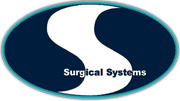
High Level Disinfection and Sterilization Processes In Veterinary Practices
Veterinary technicians are tasked with the care and maintenance of surgical equipment and instruments. In order to prevent perioperative infections, it is important to follow proper protocols and procedures. A successful infection control program should be multi-layered and include perioperative antibiotic use, incorporation of antiseptics and disinfectants, best practices for prepping and draping, as well as proper housekeeping methods and sterile processing.
Disinfection versus Sterilization
Sterilization is the destruction of all microbial life. Disinfection makes use of a chemical agent to eradicate virtually all pathogenic organisms, but not necessarily all types of microorganisms which may be present on inanimate objects e.g. bacterial endospores.
Disinfection is classified according to three levels: high, intermediate and low.
- High Level Disinfection (HLD) kills all vegetative microorganisms, mycobacteria, lipid and non-lipid viruses, fungal spores and some bacterial spores
- Intermediate Level Disinfection kills mycobacteria as well as most viruses and bacteria
- Low Level Disinfection only kills some viruses and bacteria
Medical devices are categorized based on their risk of infection due to their use. Many medical organizations use this to determine specific disinfection or sterilization protocols.
- Critical. These devices enter sterile tissue or the vascular system and must undergo sterilization. Such devices would be surgical instrument and needles.
- Semi Crit These devices come into contact with intact mucous membranes but do not normally penetrate sterile tissues. These devices need High Level Disinfection. Examples of such devices are thermometers and endoscopes.
- Non Critical. These devices do not come into contact with the patient or touches only intact skin. These need Low Level Disinfection. Examples are blood pressure cuffs as well as stethoscopes.
The objectives of sterile processing is to ensure that every item in each load is sterile, to minimize the risk of healthcare-associated infections, to ensure that regulatory requirements are met based on human standards and practices, and to ensure that continued education and training results in quality outcomes.
It is imperative that reusable medical devices are properly maintained, cleaned and disinfected or sterilized to prevent infection. Many of these current guidelines apply to human healthcare settings, and although the veterinary profession does not yet have such a set of guidelines, there is some overlap in the areas of sterilization. This is why it is so important that the veterinary team continuously strives to improve practices through education and on-going training. Of particular importance is the adherence to cleaning procedures that are set out by the manufacturers’ instructions for use (IFU).
Cleaning Procedures
Instruments need to be surgically clean before high level disinfection, and this can be done by either liquid chemical sterilization (LCS) or other forms of sterilization such as steam or hydrogen peroxide gas plasma. All surgical equipment should be washed either manually or mechanically straight after use. If this is not immediately possible, then the equipment should be kept moist in an approved product until they can be cleaned as recommended. Only detergents and enzymatic cleaners approved for surgical devices should be used for washing.
Cannulated items such as suction tips or arthroscopic equipment should follow a three tier cleaning process; flushing with water, brushing with an appropriate brush and rinsing. Ultrasonic cleaning should be incorporated as part of this comprehensive cleaning process, as this helps to remove fine debris that manual cleaning can’t remove. After the ultrasonic cleaning, instruments should be removed and rinsed with distilled water, allowed to dry completely and then visually inspected to ensure they are thoroughly cleaned.
Liquid Chemical Sterilants and High Level Disinfection
Many liquid chemical sterilants and HLD are labelled for use in both sterilization and HLD with the former needing a longer contact time. Examples of such solutions include Glutaraldehyde solutions, Hydrogen Peroxide solutions, Ortho-phthalaldehyde (OPA) solutions, Peracetic acid-hydrogen peroxide solutions as well as sodium hypochlorite solutions.
Devices should be submerged entirely in the LCS/HLD solution for the specified time, temperature and concentration, and the solution should be inspected visually before each use. Healthcare personnel must be advised of the dangers associated with the use and handling of these chemicals, and appropriate personal protective equipment (PPE) must be worn to prevent skin and eye contact. Usage of these solutions should always be in a well ventilated area, and any potential spills need to be cleaned up safely.
The use of chemical indicators to assess parameters that are essential or critical for effectiveness is part of the sterilization process. These include time, temperature, relative humidity and EO concentration and are different depending on the sterilization process being used.
In conclusion, in order to provide the best veterinary care possible and to ensure that healthcare-associated infections are prevented, a meticulous and stringent cleaning and sterilization protocol needs to be followed within the veterinary environment. Continual education and training of staff is of utmost importance, and regular updating of policies and procedures needs to take place.
Surgical Systems stock a variety of instrument cleaning solutions; visit our website at the following link to browse what we have in stock.
Article reference and credit:
Heidi Reuss-Lamky LVT, VTS (Anesthesia & Analgesia, Surgery), FFCP
